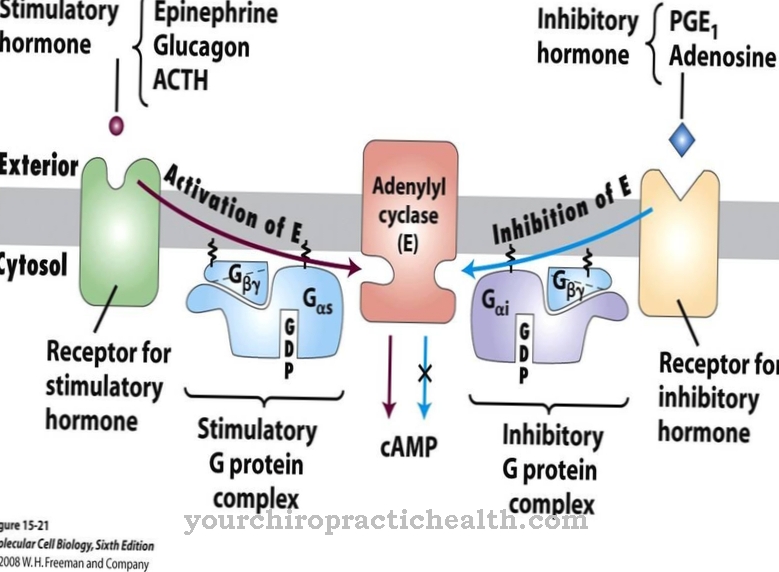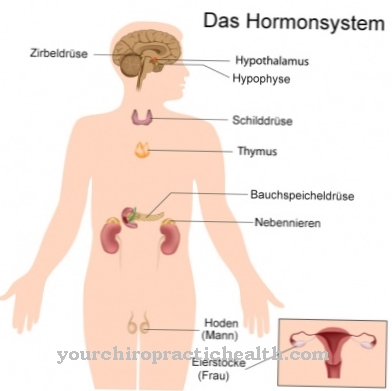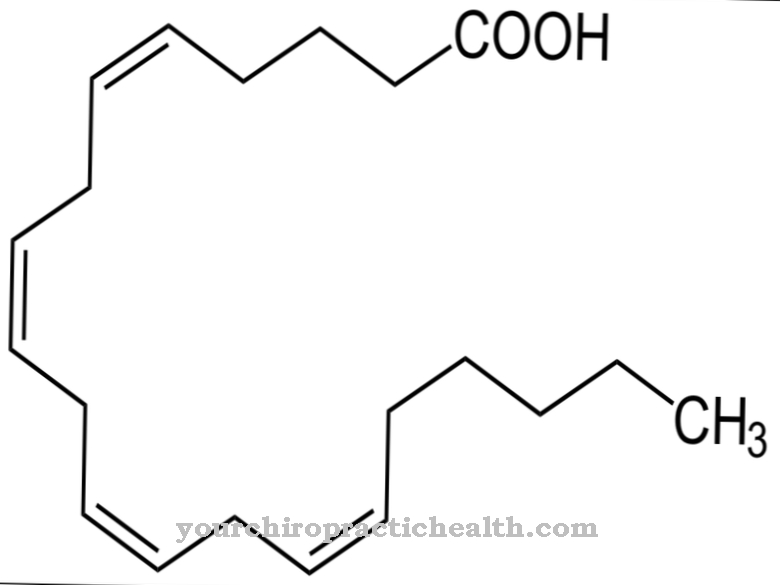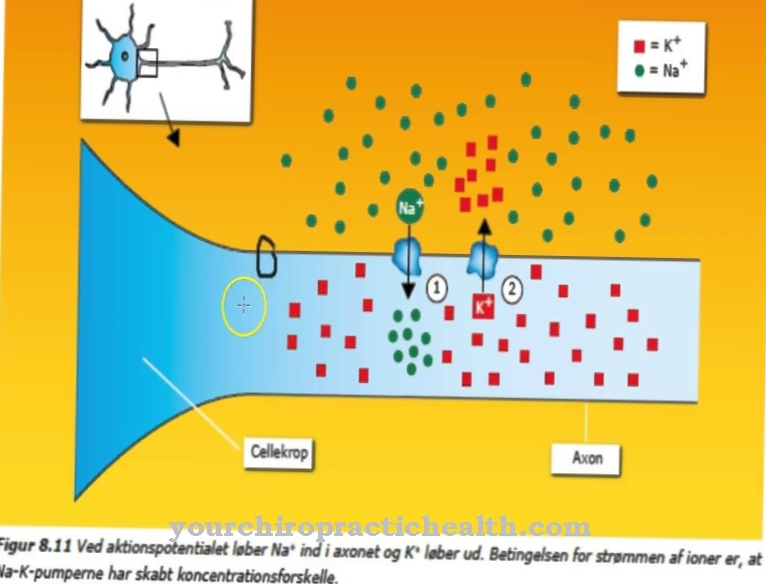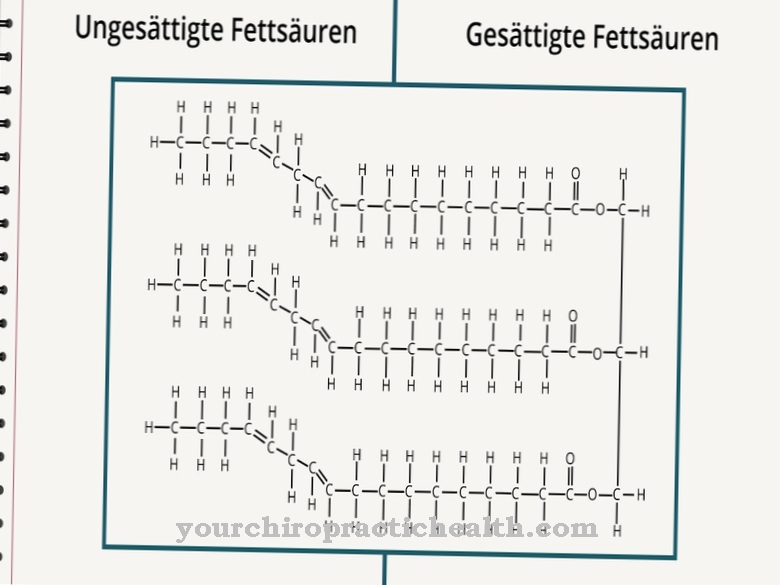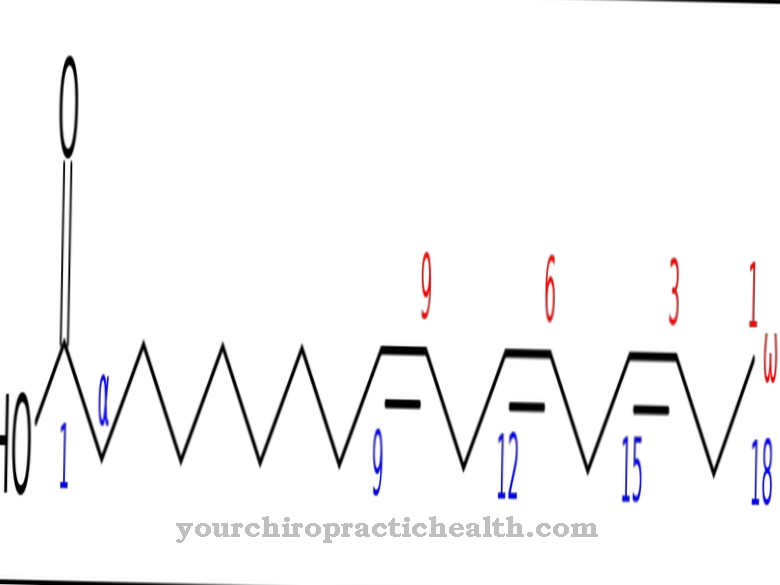The Eicosapentaenoic acid is a polyunsaturated fatty acid. Like alpha-linolenic acid (ALA) and docosahexaenoic acid (DHA), it is one of the omega-3 fatty acids.
What is eicosapentaenoic acid?
The eicosapentaenoic acid (EPA) is a polyunsaturated long-chain fatty acid. In English, these fatty acids are also referred to as polyunsaturated fatty acids (PUFAs).
Since the first double bond is in the third carbon bond, it is an omega-3 fatty acid. The body can produce EPA itself, but needs alpha-linolenic acid for this. However, EPA can also be supplied with food. The fatty acid is found mainly in fatty sea fish such as herring, eel and mackerel.
Function, effect & tasks
Eicosapentaenoic acid plays a role in many metabolic processes. Eicosanoids and docosahexaenoic acid (DHA) are formed from the fatty acid. Eicosanoids are hormone-like substances that act as both neurotransmitters and immunomodulators.
They are involved in many inflammatory processes in the human body. These include, for example, the widening of the vessels, blood clotting and inflammation regulation. The regulation of blood pressure and the heart in general are also influenced by eicosanoids. Prostaglandins, prostacyclines, thromboxanes and leukotrienes belong to the eicosanoids. DHA is a fatty acid component of phospholipids. These, in turn, are an elementary component of cell membranes and are particularly found in nerve cells. Docosahexaenoic acid is mainly needed in the brain.
But there is also a lot of DHA in the retina. Around 97 percent of all omega-3 fatty acids in the brain and almost 94 percent of all omega-3 fatty acids in the retina consist of docosahexaenoic acid. DHA is also a starting material for the synthesis of neuroprotectins, resolvins and docosatrienes. The fatty acid can lower blood pressure and heart rate and therefore plays an important role in the treatment of high blood pressure.
Education, occurrence, properties & optimal values
The human body is dependent on the supply of alpha-linolenic acid (ALA) for the formation of EPA. ALA is found mainly in vegetable oils. Linseed oil, rapeseed oil, soybean oil, walnut oil and hemp oil are rich in alpha-linolenic acid. EPA synthesis from alpha-linolenic acid is significantly more effective in women than in men. This can be attributed to the estrogen. It appears to stimulate the synthesis of EPA from ALA.
Healthy women convert around 21% of the ALA ingested into EPA, while only around 8% are converted in men. In order for EPA to be synthesized from ALA, however, the enzymes delta-6-desaturase and delta-5-desaturase must be present in sufficient quantity and activity. In order for the desaturases to do their job, they need various micronutrients. Vitamin B6, biotin, magnesium, zinc and calcium are particularly important. A deficiency in these nutrients leads to decreased EPA synthesis. The synthesis is also inhibited by an increased intake of saturated fatty acids, alcohol consumption, increased cholesterol levels, viral infections, diabetes mellitus and stress. Less ALA is also converted in old age.
EPA can not only be made from ALA, but can also be taken in directly with food. The fatty acid is found mainly in fatty cold water fish such as herring, sardine, salmon and mackerel. Some microalgae are also rich in EPA and DHA. The fatty acids are absorbed in the small intestine.
A precise requirement for EPA has not yet been determined. The German Nutrition Society (DGE) recommends an intake of 250 milligrams per day. However, all long-chain omega-3 fatty acids fall under this recommended intake. However, the values of the DGE are estimated values and take into account neither individual eating habits nor the state of health or the extraordinary stress of the individual.
Both the DGE and the Federal Institute for Risk Assessment (BfR) consider an intake of around three grams of EPA per day to be harmless. But not only the absolute amount of omega-3 fatty acids consumed counts, the ratio of omega-3 to omega-6 fatty acids should also be considered. At best, the ratio of omega-6 to omega-3 fatty acids should be 2: 1 or a maximum of 5: 1. In the western world, however, the ratio is often 15: 1 or even 20: 1.
Diseases & Disorders
An unfavorable ratio favors cardiovascular diseases and rheumatic diseases.
A deficiency in omega-3 fatty acids is often noticeable beforehand. However, the symptoms are rather uncharacteristic, so that an EPA deficiency cannot be automatically concluded. Possible symptoms of an EPA deficiency are muscle weakness, muscle tremors, sensitivity to light, flaky skin, impaired concentration, decreased performance, growth disorders or sleep disorders.
The eicosanoids, which are formed from eicosapentaenoic acid, usually have an anti-inflammatory effect. A deficiency in EPA therefore often manifests itself in excessive inflammatory reactions or inflammatory reactions that hardly subside. An EPA deficiency should also be considered in the case of allergic symptoms. Especially the type 1 allergy is meant here. In this immediate type of allergy, the body reacts to an allergen within minutes. Typical examples of this type of allergy are hay fever or allergic asthma.
A lack of EPA also promotes the development of arteriosclerosis. Atherosclerosis is the greatest risk factor for heart attack and stroke. A deficiency in omega-3 fatty acids and thus also in eicosapentaenoic acid also seems to play a role in skin diseases such as neurodermatitis or psoriasis. A decrease in erythema was observed in psoriasis patients who took fish oil as a dietary supplement. The thickness of the plaques also decreased and the flaking of the skin was much easier. In addition, the agonizing itching decreased. Similar results were found with neurodermatitis.
EPA can also have a soothing effect on chronic inflammatory bowel diseases such as Crohn's disease or ulcerative colitis.

